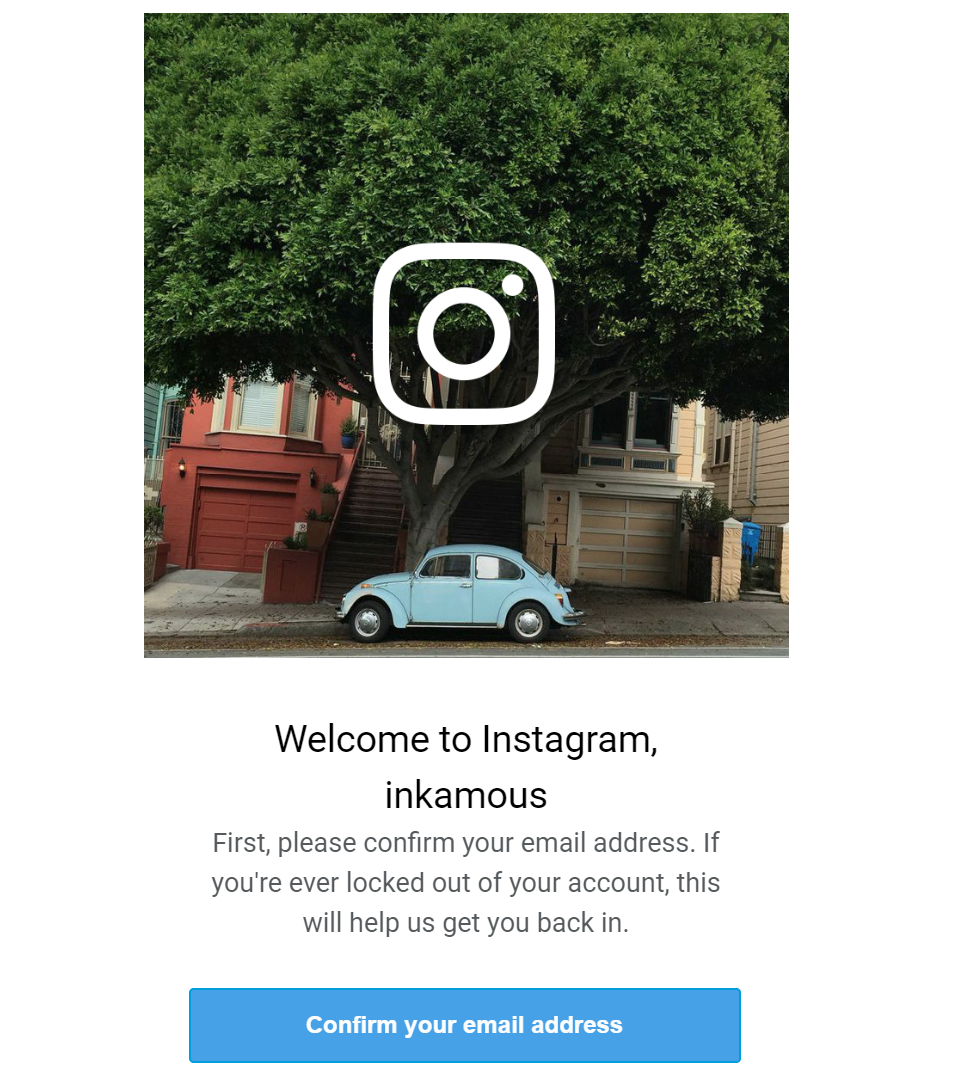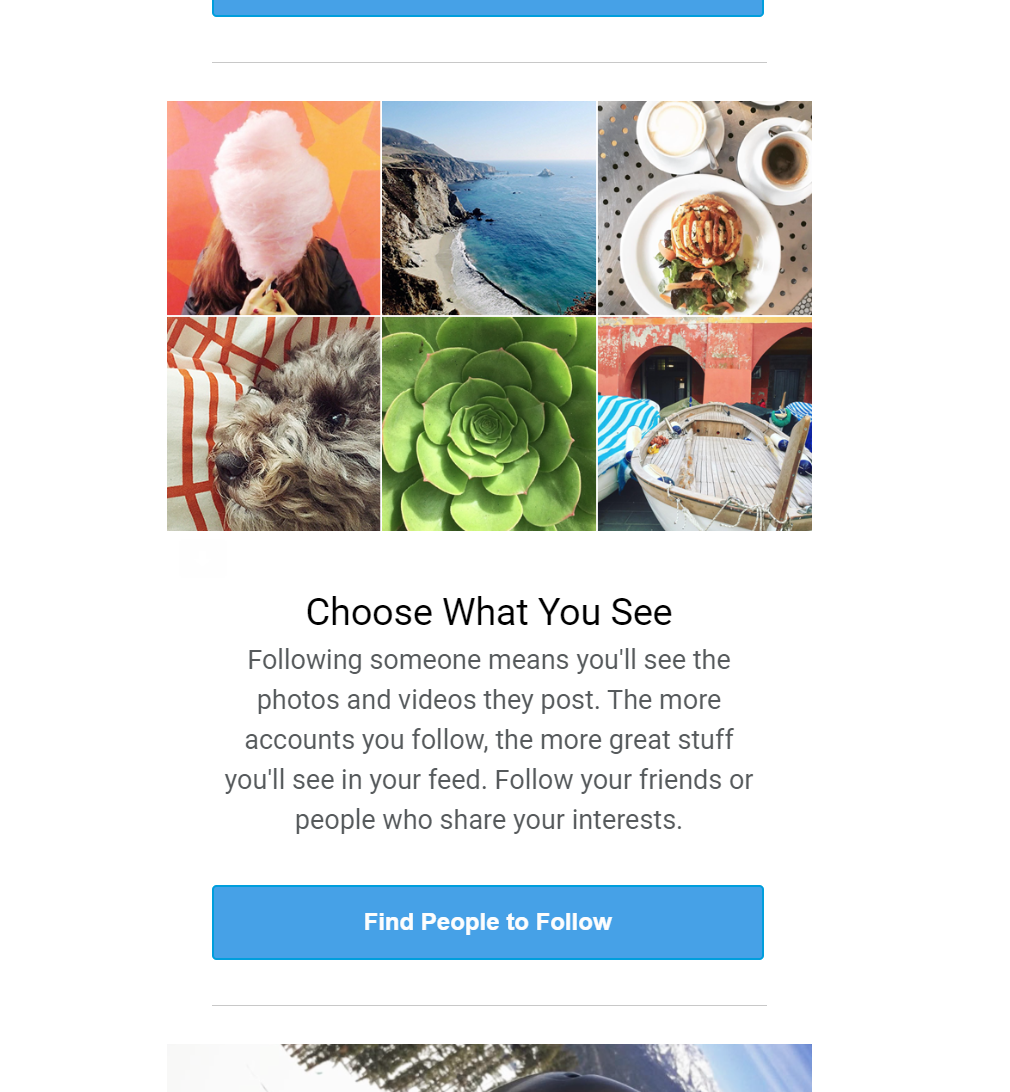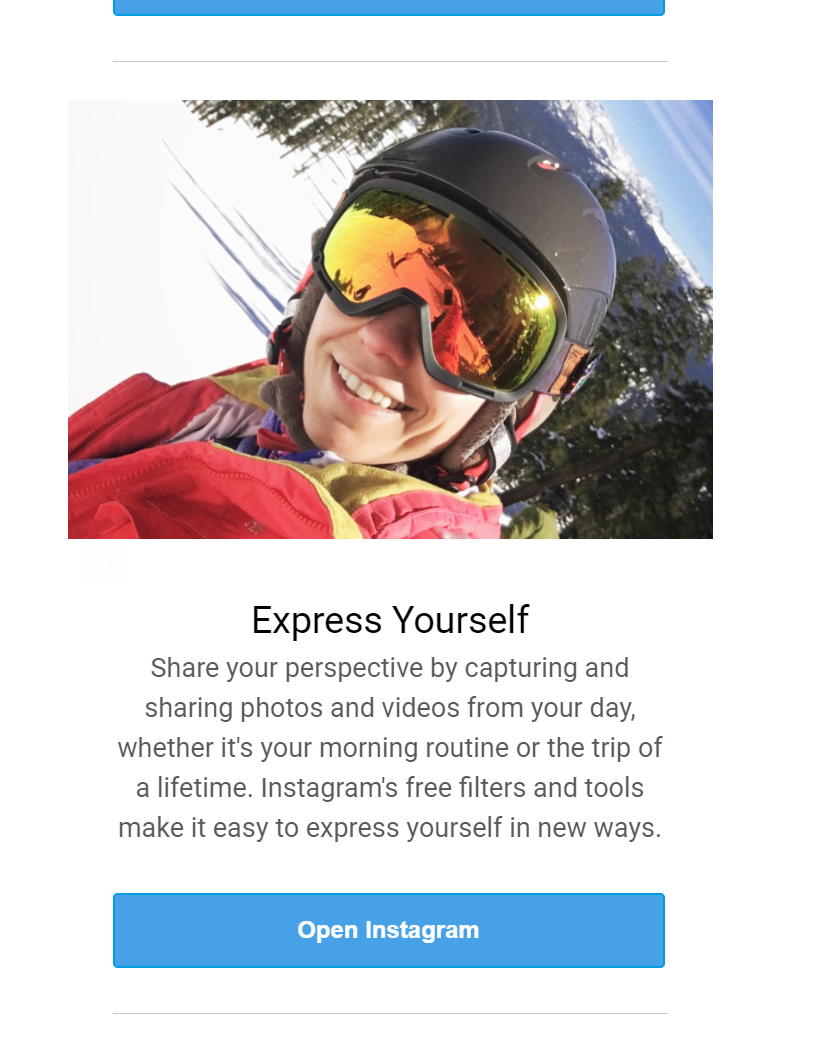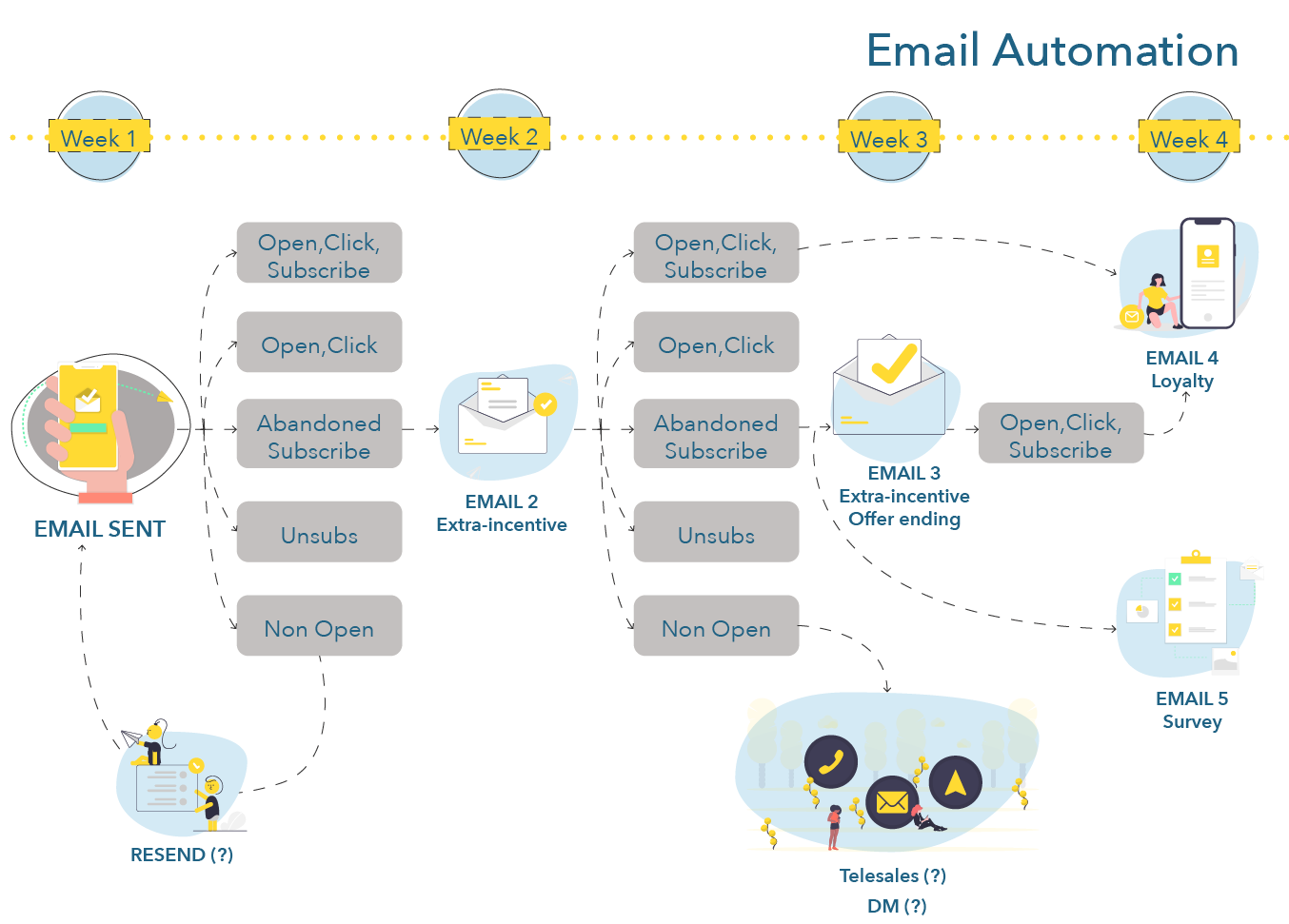What Happens Once You Get a Lead?
Ideally, acquiring a lead’s email address should start a sequence of planned emails and other marketing activities (such as ad retargeting, which we will cover in the next chapter). This sequence of planned emails should aim at transforming a marketing-qualified lead to a sales-qualified lead (MQL to SQL), using targeted content to move the lead from informing them about their problem to helping them evaluate their solution to explaining why a firm’s product is the best solution.
The first email in an email marketing campaign should be an onboarding email. An onboarding email should guide leads and educate them about what is about to come. This email should help make a lead take the next step in the series of planned activities a firm has sequenced. Often, onboarding emails will tell leads what to expect, such as the content of future emails and how often they will be sent.
Let’s take a look at Instagram’s onboarding email.
First, Instagram asks whether we indeed create an account with them, i.e., they practice double opt-in (Figure 7.5).
Figure 7.5 Double Opt-In on Instagram – Part 1

Second, they push you to take the next step in order to maximize your engagement on their platform. In the case of social media networks, a threshold effect has been found to maximize engagement, where following a minimum number of people greatly boosts the chance that a user will come back. It thus makes sense that this is first action that Instagram proposes users to engage in (Figure 7.6).
Figure 7.6 Double Opt-In on Instagram – Part 2

Last, Instagram tells users to start using the product (Figure 7.7), which is also quite well aligned with what we would expect people to want to do once they have signed up for an Instagram account.
Figure 7.7 Double Opt-In on Instagram – Part 3

Here is another example, this time from a lead obtained from a content opt-in newsletter subscriber who was reading a blog article on Christmas decorations on the Crate & Barrel blog. Importantly, we can see how Crate & Barrel continues the conversation that started on a Christmas-related blog post by offering more information on Christmas decorations (Figure 7.8).
Figure 7.8 Drip Email Sequence Example

First, the onboarding email congratulates the lead for signing up for the newsletter and explains what the lead will be receiving in the future. Then, the first action offered to consumers is to explore new articles relating to Christmas decorations. The email then breaks down product categories that a user might be interested in.
The onboarding email should be the first email in a sequence of emails meant to convert leads to customers, which should ideally follow consumers in their journey (i.e., moving from problem to solution to product). This email sequence is often referred to as a drip email sequence or drip email campaign. Here is how HubSpot explains an email drip campaign:
An email drip campaign is a form of automated sales outreach. It’s comprised of a series of emails automatically sent to a specific audience after they take a specific action. For example, if a lead downloads a whitepaper on recruiting best practices, they might be placed in a drip campaign sharing relevant recruiting content. The final email might include a CTA to request a demo for your recruiting software.
This is (very simply) represented in Figure 7.9 (text here). The exact steps and content would depend on the stage at which a consumer signed up. For example, were they reading an awareness post or reading about potential solutions for their problem?
Figure 7.9 Drip Sequence

We can see how each email serves a dedicated function. The first email is an onboarding email explaining the value of signing up for the newsletter. The email that follows might be a problem- or solution-focused email depending on where the consumer is in their journey (since we’re at the lead generation stage, generally the consumer should be further down the funnel, e.g., weighing their options). The third email is a promotional product email to conclude a sale, the fourth email is a reminder (if the sale hasn’t been concluded), and the last email makes sure that the consumer still wants to receive emails (since the sale still hasn’t been concluded).
A simplified application of this sequence as provided by DripScripts is as follows:
- Email 1: Bryan, All I can say is THANK YOU! (Thank you email)
- Email 2: Content w/ P.S. Mention of offer (Content email)
- Email 3: Did you get your Cup of Joe? (Promo email)
- Email 4: 1 DAY LEFT) Does anyone else have these questions? (Q&A persuasion email)
- Email 5: [Disappears @ Midnight] 80% off my new Self Publishing Course (…plus 5 free
- bonuses) (Promo email)
- Email 6: LAST CALL – Self-Publishing Training Bundle Closing in 4 hours (Closing email)
Real life, though, is not as straightforward. Based on what we learned in lead scoring, we could also leverage here the idea of behavioral scoring and create decision trees to help strengthen our chances of converting leads. Did they open the email? Click on the link we provided? Read the blog post? Emails and other marketing activities should be informed by what the consumer has done with the last activity they interacted with. Marketing automation has helped create more complex marketing campaigns based on how a user will have interacted with a previous marketing activity. Figure 7.10 (text here) shows a flow chart for a simple example from Jacobs Levenger/Smart Insights.
Figure 7.10 Email Automation


No Comments